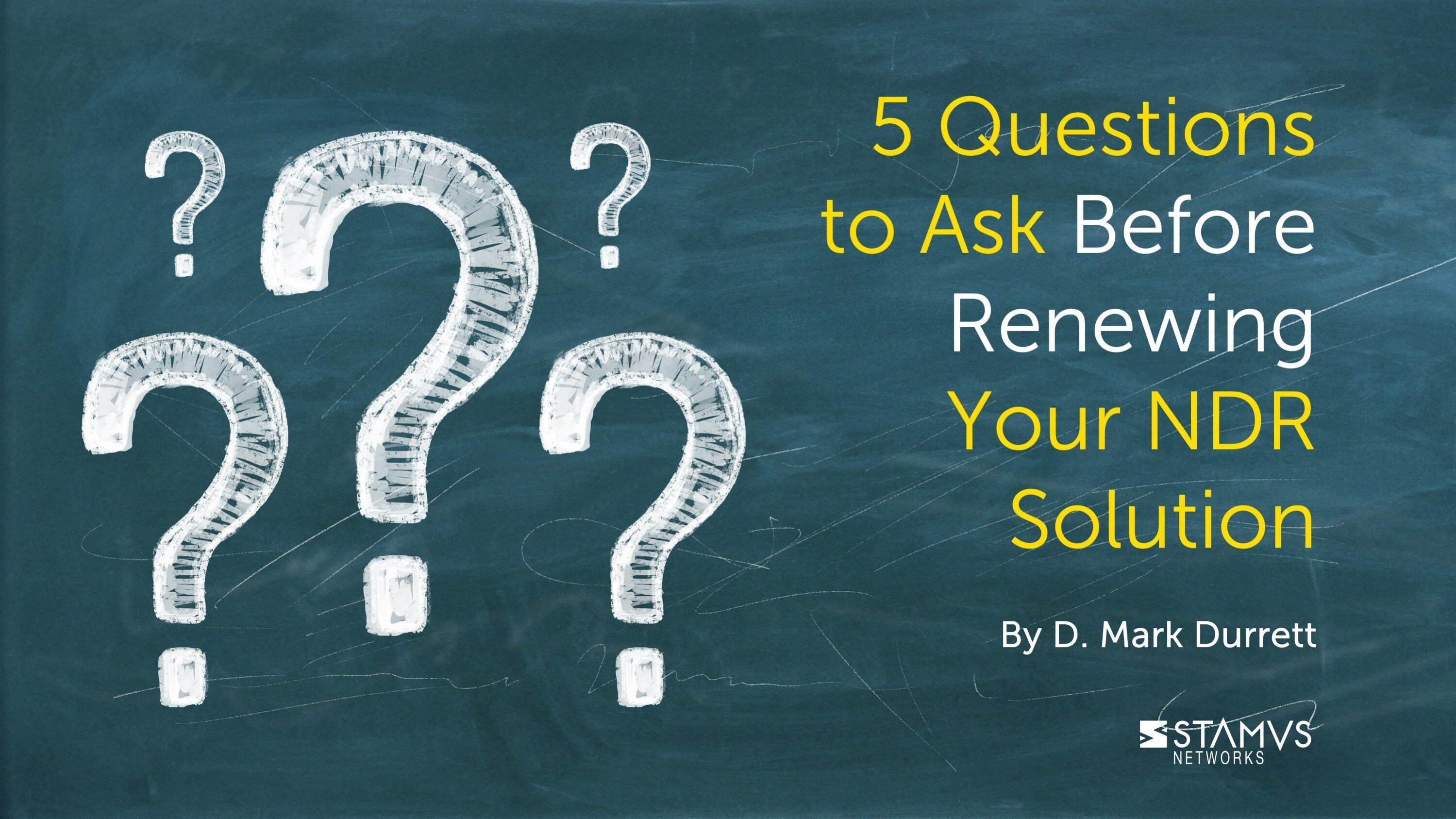Cybersecurity is always changing, and as new product categories continuously enter the market it is increasingly important to understand the differences in the various solutions organizations have the option to utilize. XDR (extended detection and response) and NDR (network detection and response) are occasionally used interchangeably, yet they represent two distinct approaches to cybersecurity. Determining the best XDR solutions or the best NDR solutions or which of the two is best for your organization can become a daunting task. This blog post seeks to unravel the complexities surrounding XDR and NDR, shedding light on their differences, use cases, and the ever-changing landscape of threat detection and response systems.
Is XDR the same as NDR?
Although the two threat detection and response systems are related in their use cases, extended detection and response (XDR) and network detection and response (NDR) are not the same. NDR vendors are often clear about this in their product descriptions, however XDR vendors might claim to have some NDR capabilities.
Ultimately, the differences in these systems come down to their source of information. XDR claims to integrate data sources across networks, endpoints, and cloud environments. This is essentially an expansion of the capabilities of SIEM (security information and event management) and SOAR (security orchestration, automation, and response) systems paired with additional correlations and analytics.
NDR, on the other hand, focuses solely on providing results at the network level. Using signature-based detection, deep packet inspection, advanced analytics, machine learning, and behavioral analysis techniques, NDR provides full visibility into network traffic.
Understanding the differences between these two systems requires taking a closer look at what XDR is how it is used.
What is XDR?
XDR (extended detection and response) is an evolution of SOAR and SIEM systems, claiming to pair cross-environment visibility from multiple data sources with advanced threat detection and response capabilities.
Gartner defines XDR as “a platform that integrates, correlates and contextualizes data and alerts from multiple security prevention, detection and response components.”
XDR is the newest addition to the threat detection and response family, joining existing solutions like NDR and EDR. XDR vendors often claim that their solution can replace these existing systems, but the efficacy of that claim is yet to be seen.
For now, XDR has three primary use cases outside of threat detection:
- Threat Hunting: Analytics and machine learning capabilities allow security teams to spot patterns, anomalies, and indicators of compromise across endpoints, networks, and cloud services.
- Triage: Due to SIEM and SOAR functionalities, users can prioritize or triage alerts and quickly respond to the most crucial ones.
- Investigation: Visibility into multiple environments, paired with telemetry from diverse sources features for automated analysis, allow security teams to quickly and easily establish where a threat originated, how it spread, and what other users or devices might be affected.
Is XDR a SIEM tool?
Although some XDR systems evolved from SIEM (security information and event management) tools, XDR is not technically a standalone SIEM tool. SIEM is a tool for organizing, managing, and analyzing security information. These types of systems collect and aggregate log data generated throughout various components of an organization's IT infrastructure, including host systems, applications, and security systems.
Some XDR systems evolved out of SIEM capabilities, combining that ability to collect and organize data with the more advanced detection methods — like AI or machine learning-based detections - found in systems like NDR or EDR. The goal of XDR vendors that follow this approach is to improve the traditional SIEM and SOAR combo by providing greater flexibility, interoperability, and functionality.
What is an example of an XDR?
The best XDR solutions follow one of three approaches:
- Open XDR: Open XDR is an evolution of existing SOAR and SIEM solutions that is accepting of various sources of telemetry and seamlessly integrates with different components like EDR, NDR, server logs, etc.
- TDR Extended: TDR Extended seeks to take existing threat detection and response (TDR) systems such as EDR and NDR and integrate additional telemetry sources to enhance their visibility and provide additional features.
- Single Vendor XDR: Single Vendor XDR is an approach where a mature security vendor will attempt to repackage their existing point solutions into a single, seamlessly interconnected solution.
Is XDR the “next big thing”?
As the cybersecurity ecosystem continues to evolve, the efficacy of XDR in replacing traditional systems remains to be seen. The three primary use cases of XDR — Threat Hunting, Triage, and Investigation — showcase its potential, but organizations must navigate the nuances of implementation. Is it possible that XDR will displace more focused solutions like NDR and EDR? Maybe, but there is still a long road ahead. Organizations should be considering all the options.
To learn more about XDR, EDR, NDR, and how the three solutions come together to form a comprehensive security strategy, read our whitepaper “EDR, NDR, and XDR: Exploring Three Approaches to Threat Detection and Response”.
To be notified of new blog posts and other news, make sure to subscribe to the Stamus Networks blog and the Stamus Spotlight Monthly Newsletter, follow us on Twitter, LinkedIn, and Facebook, or join our Discord.






